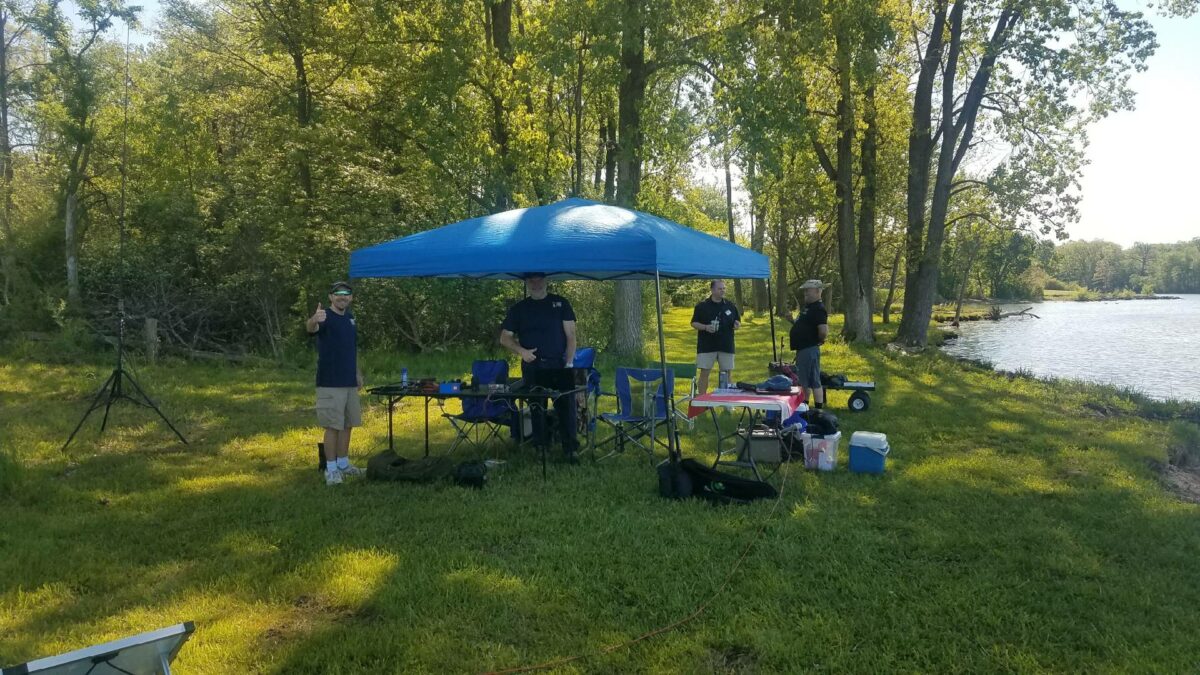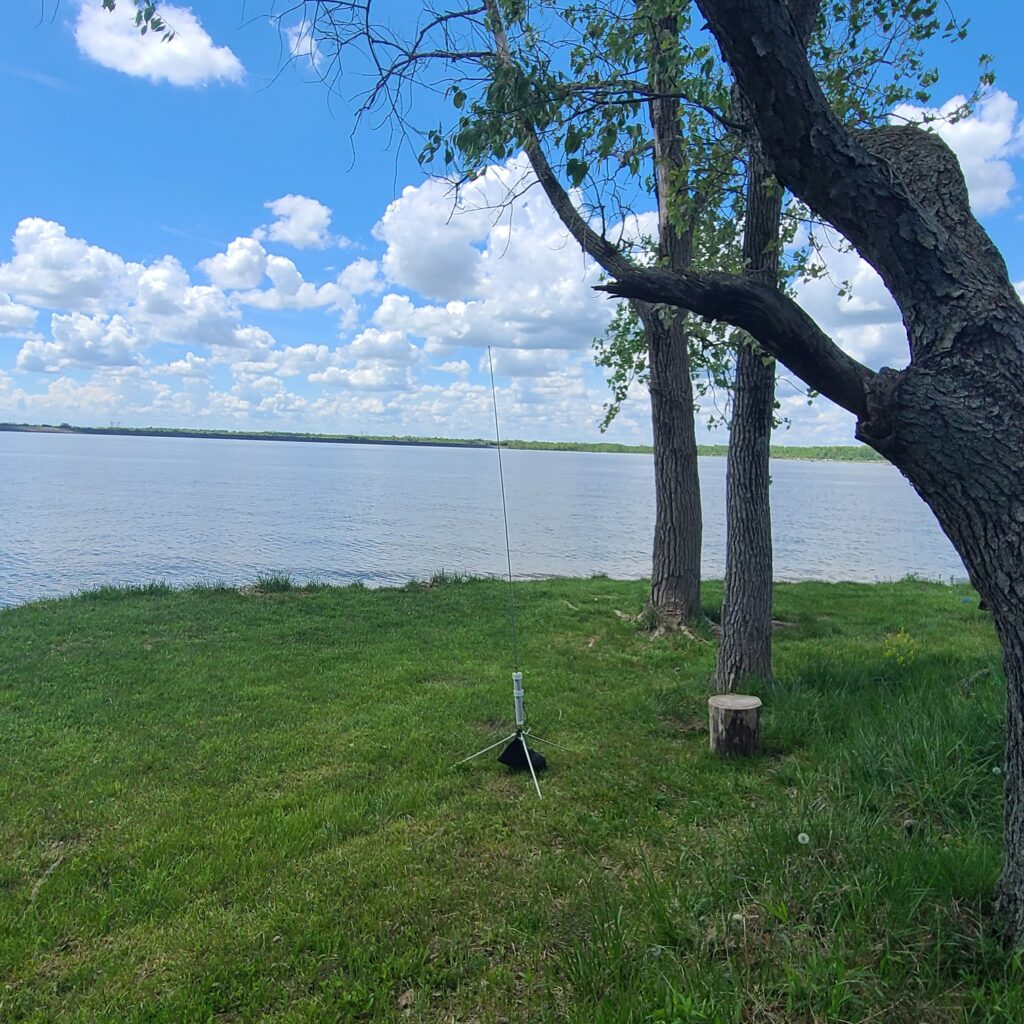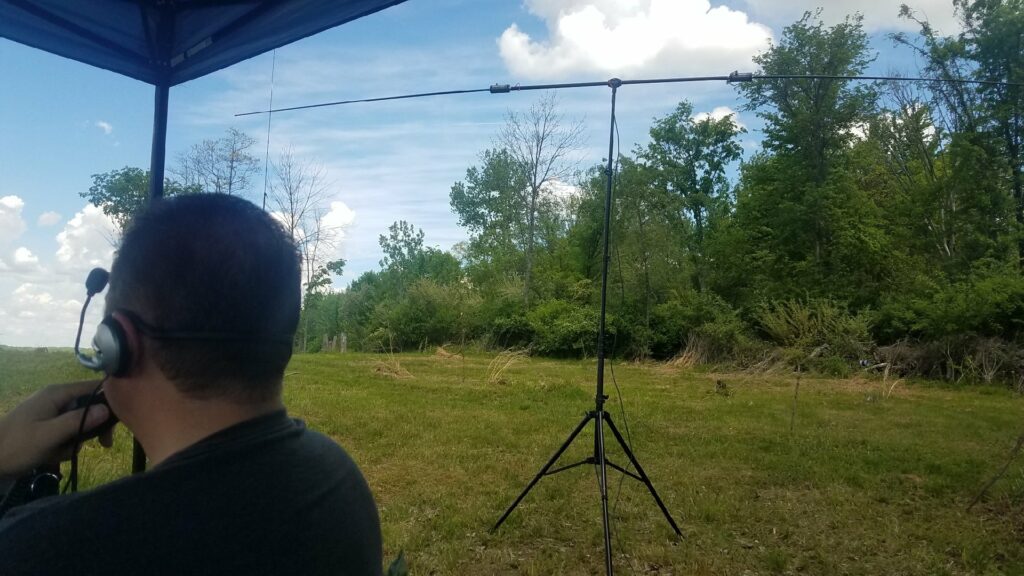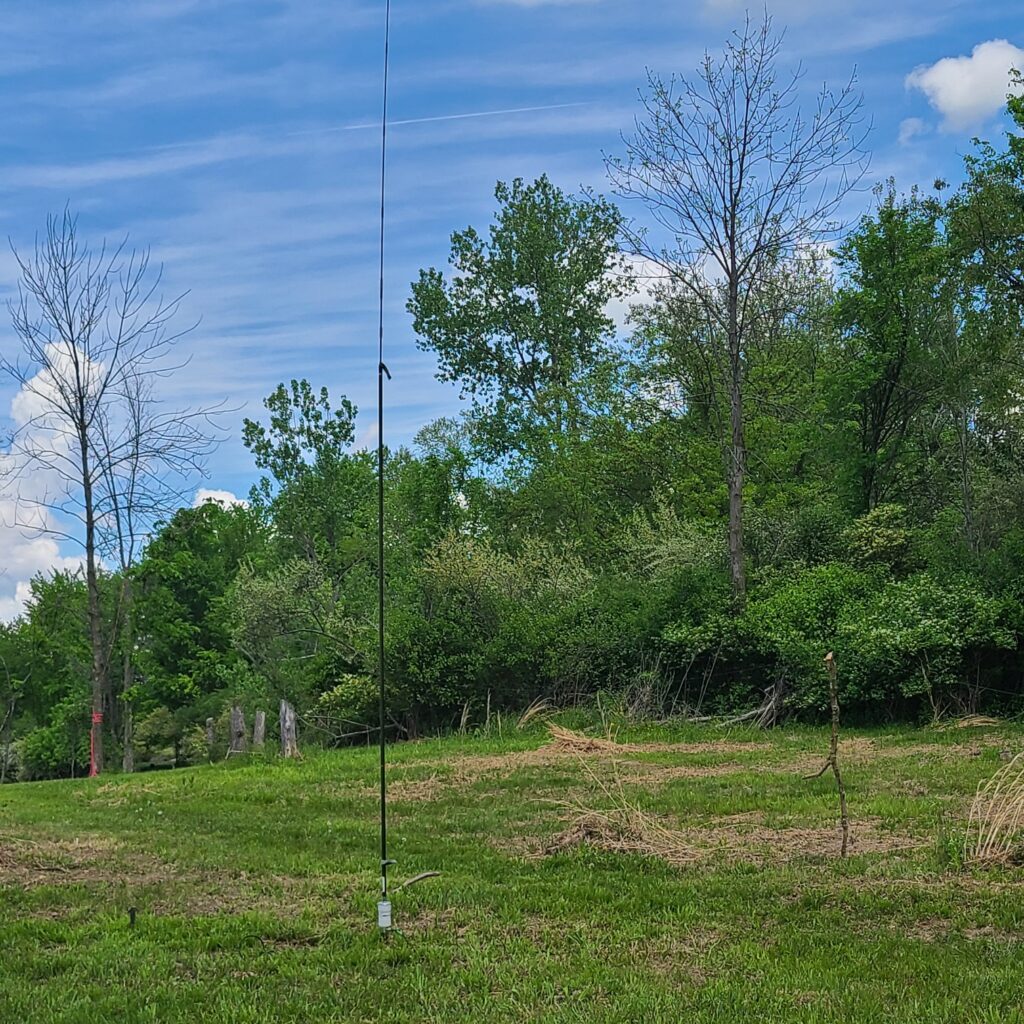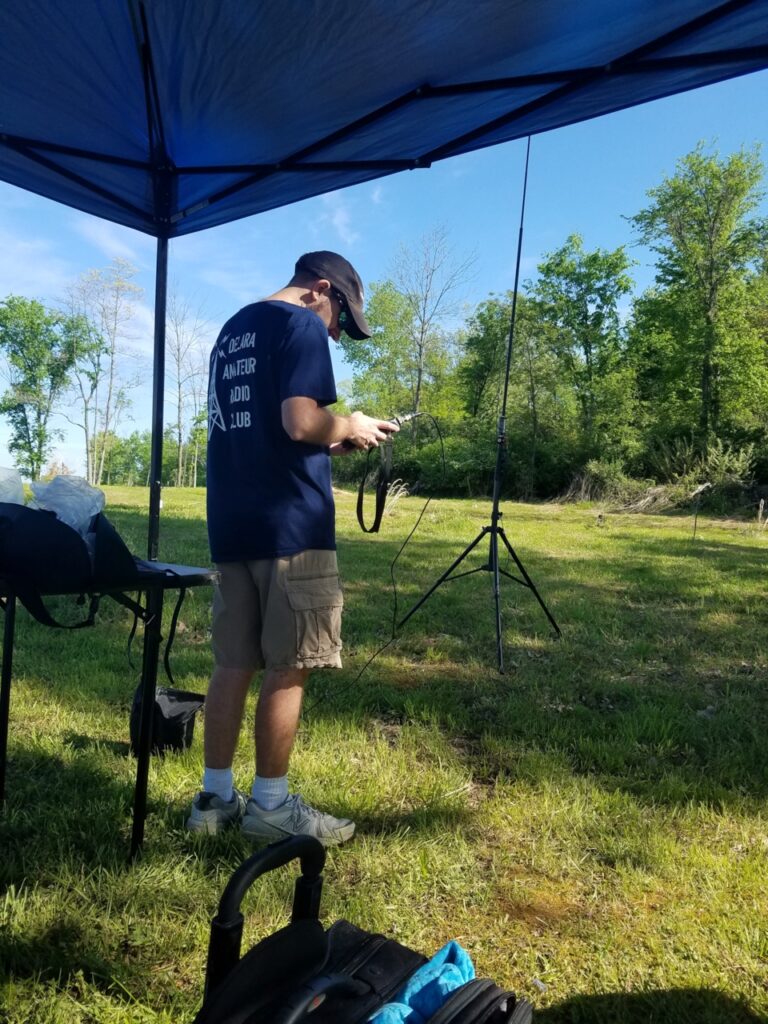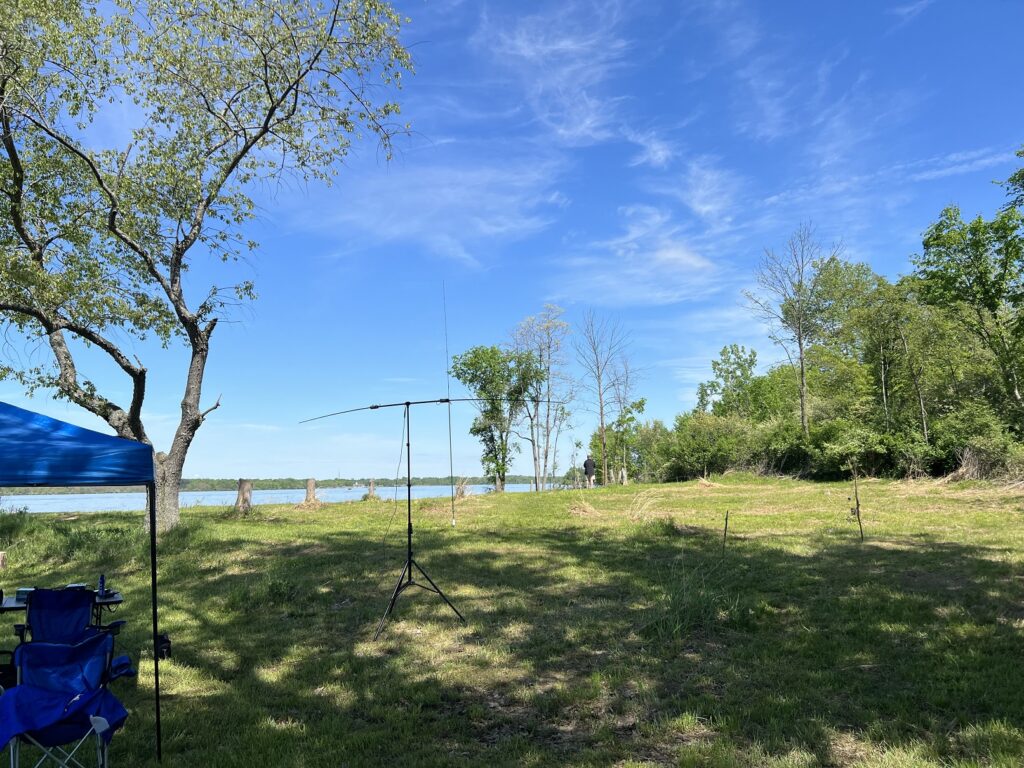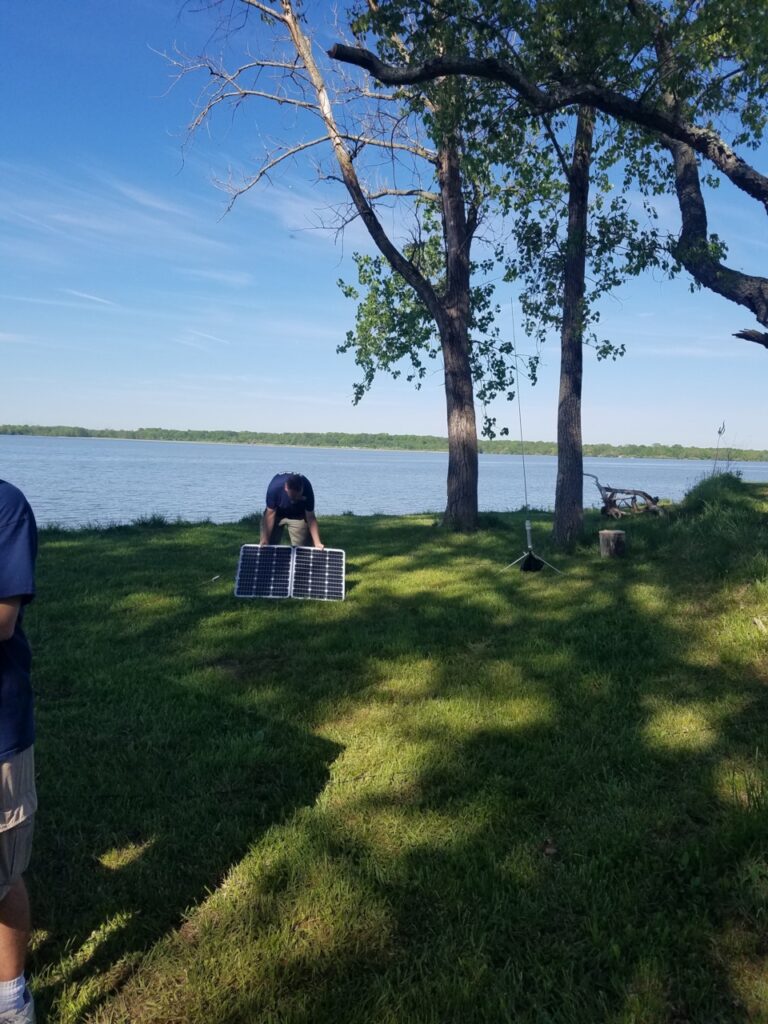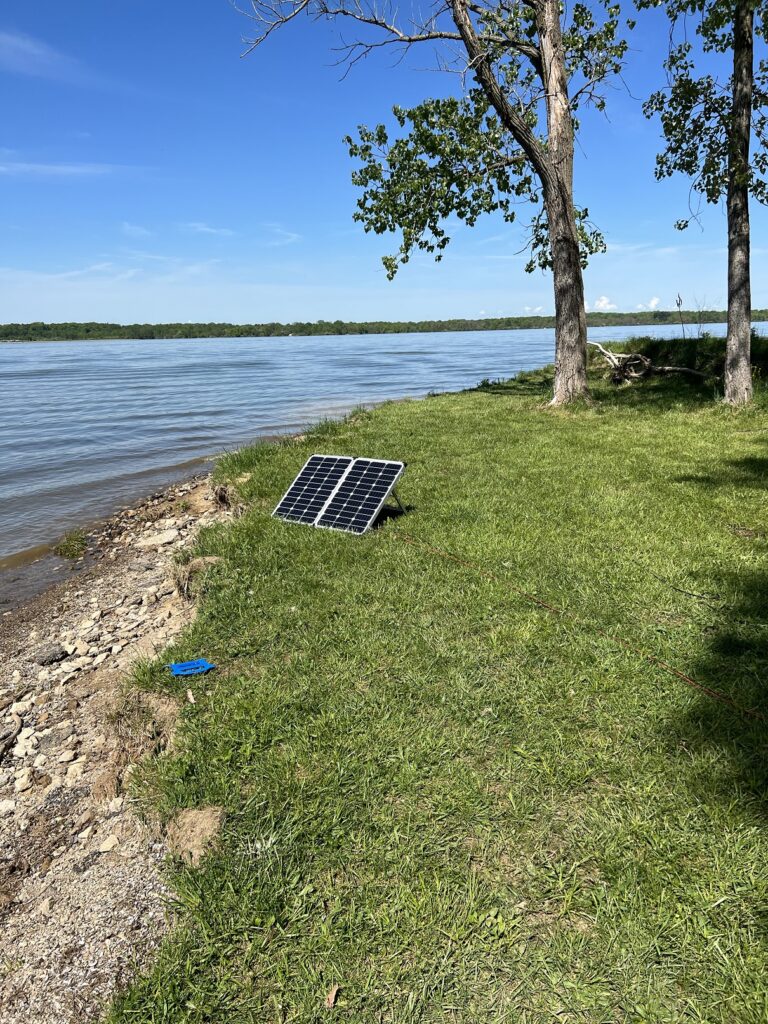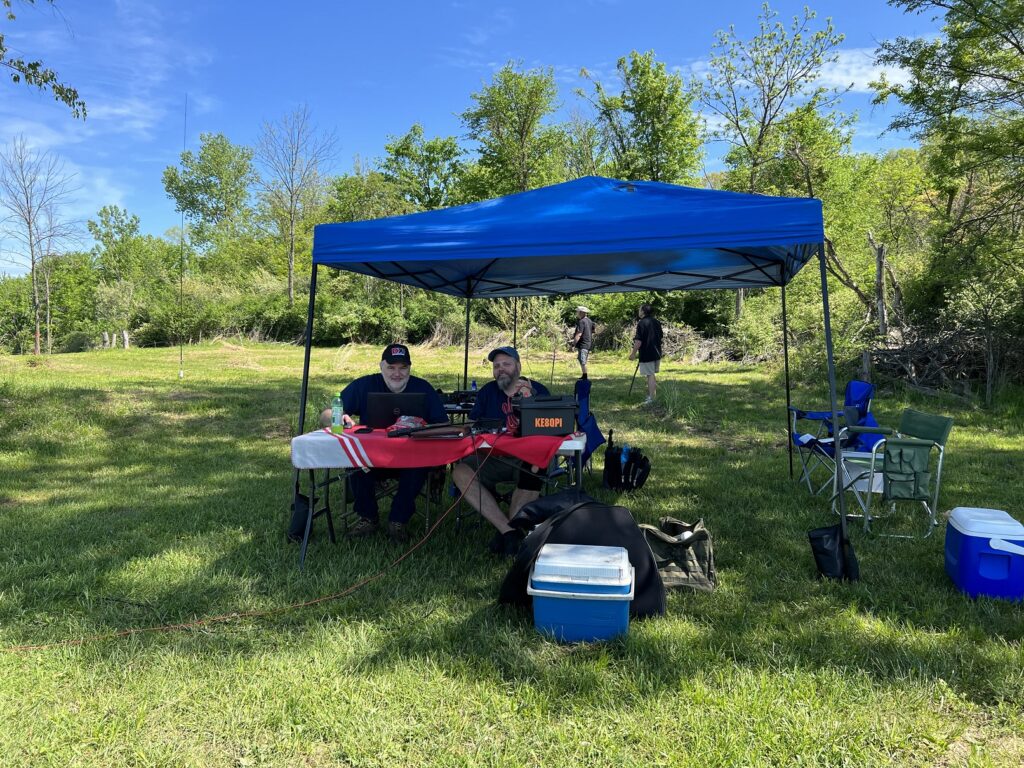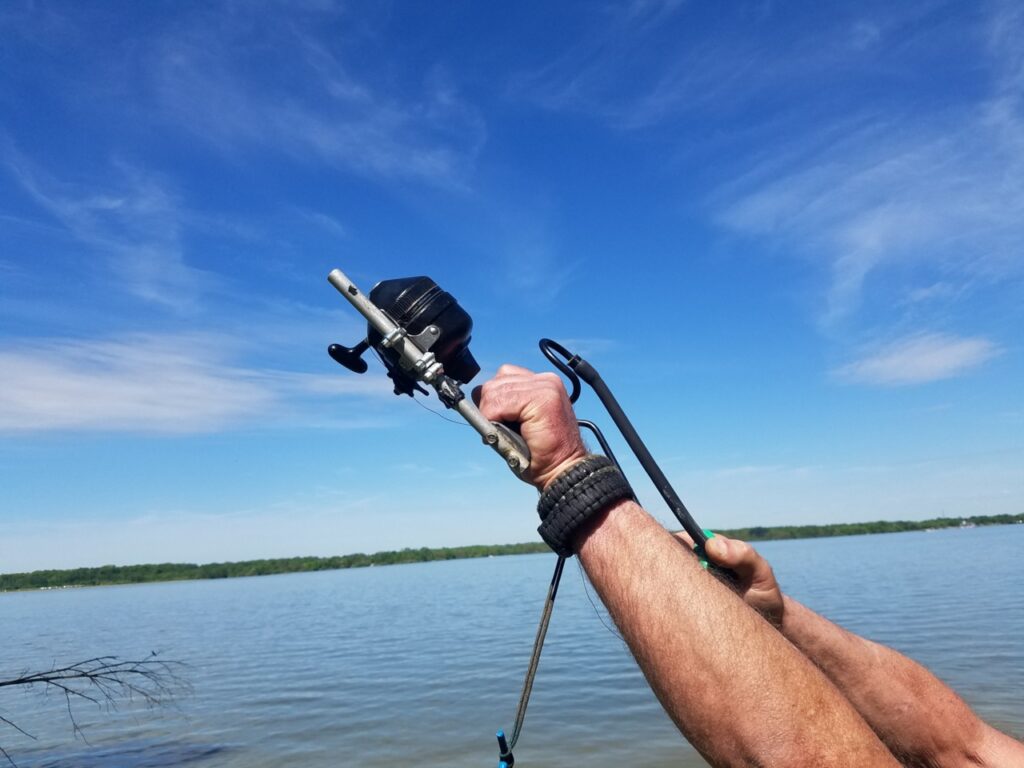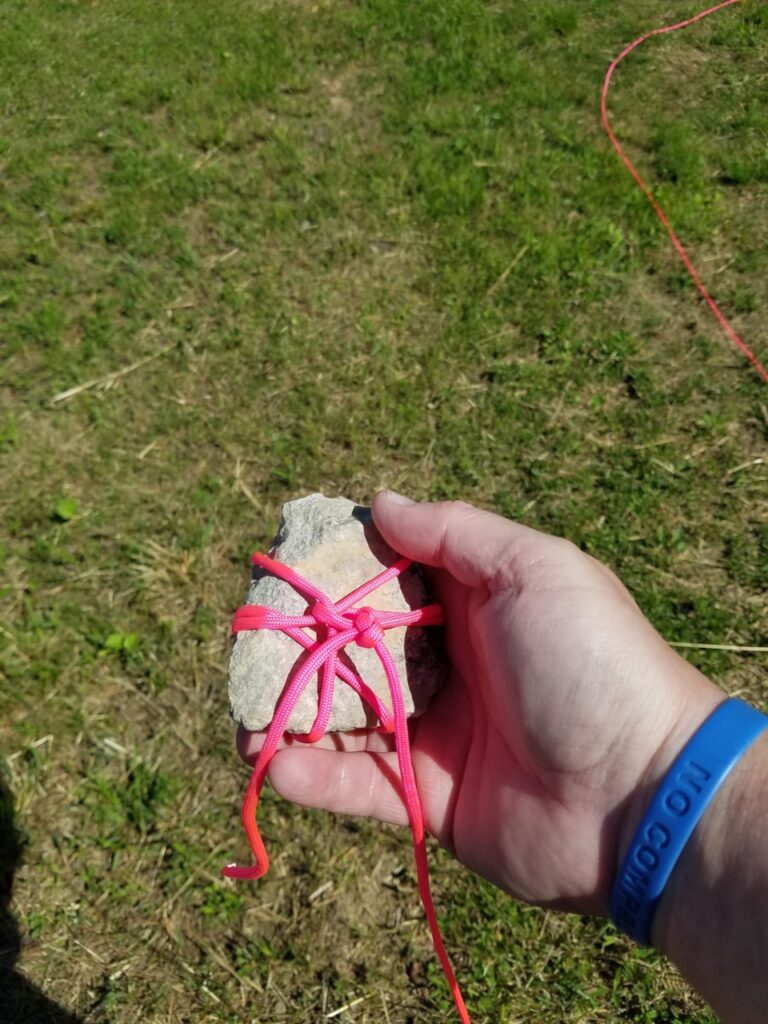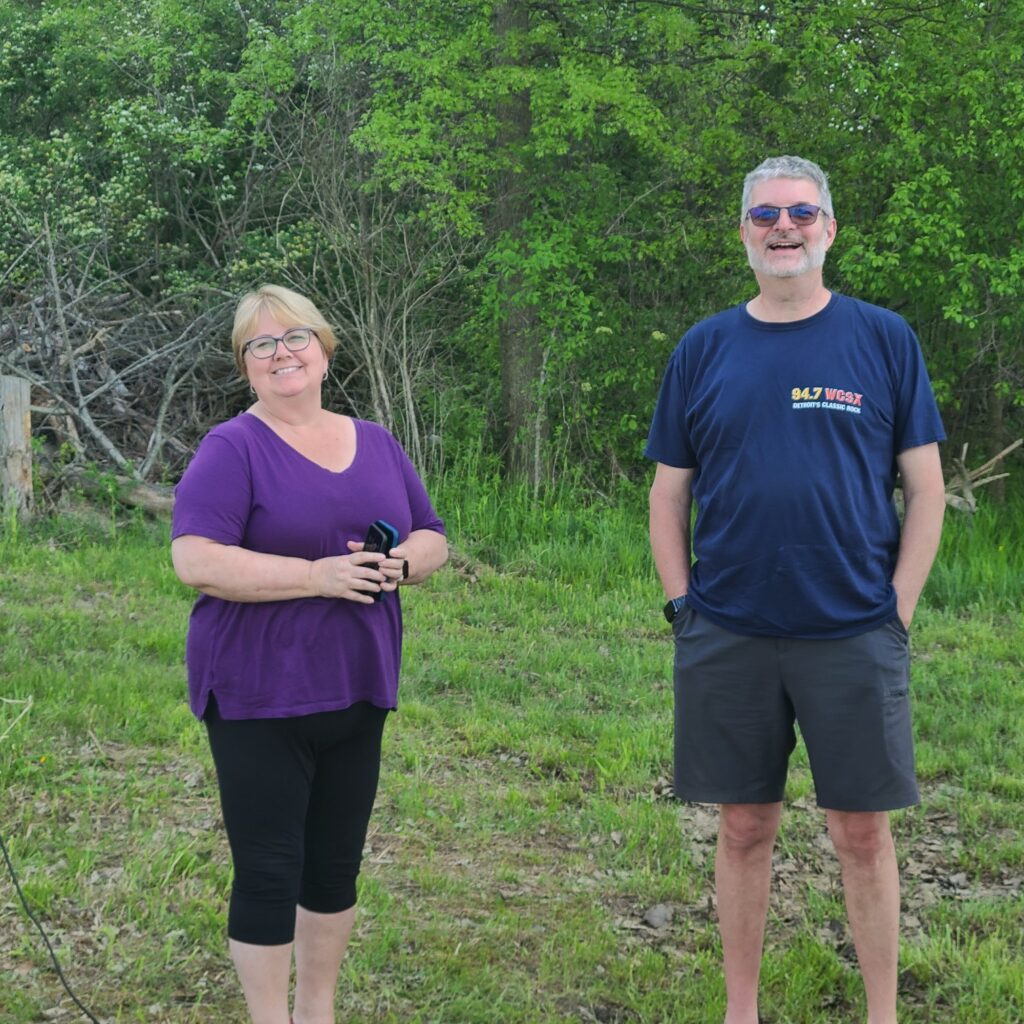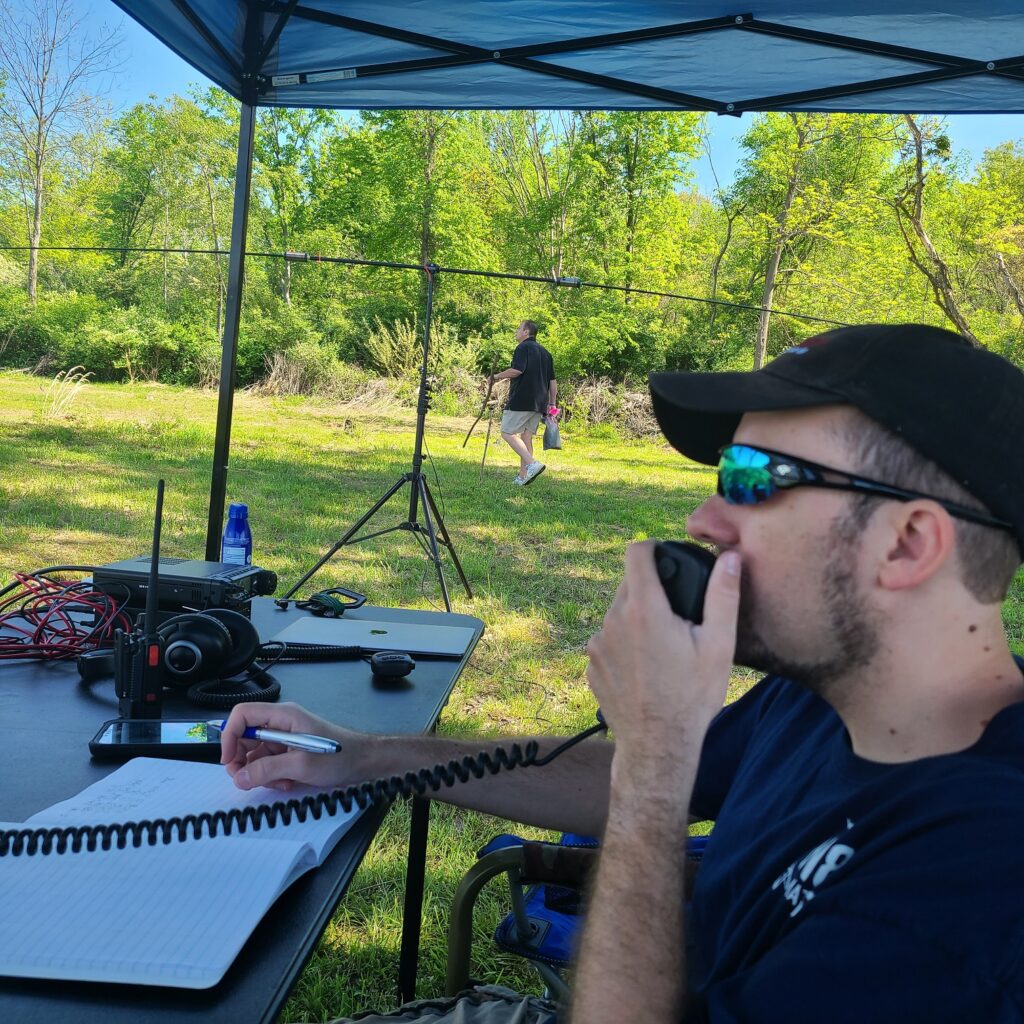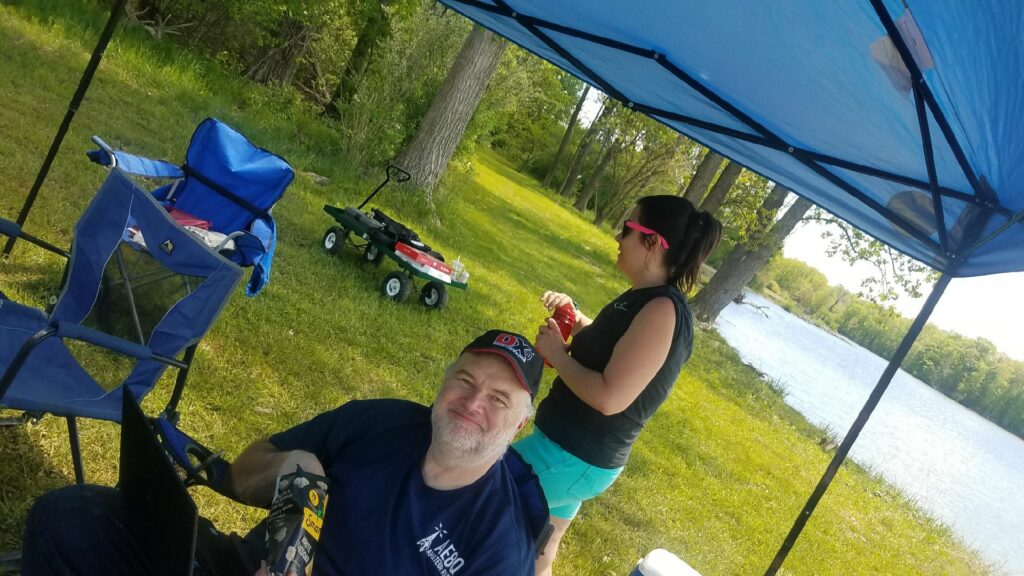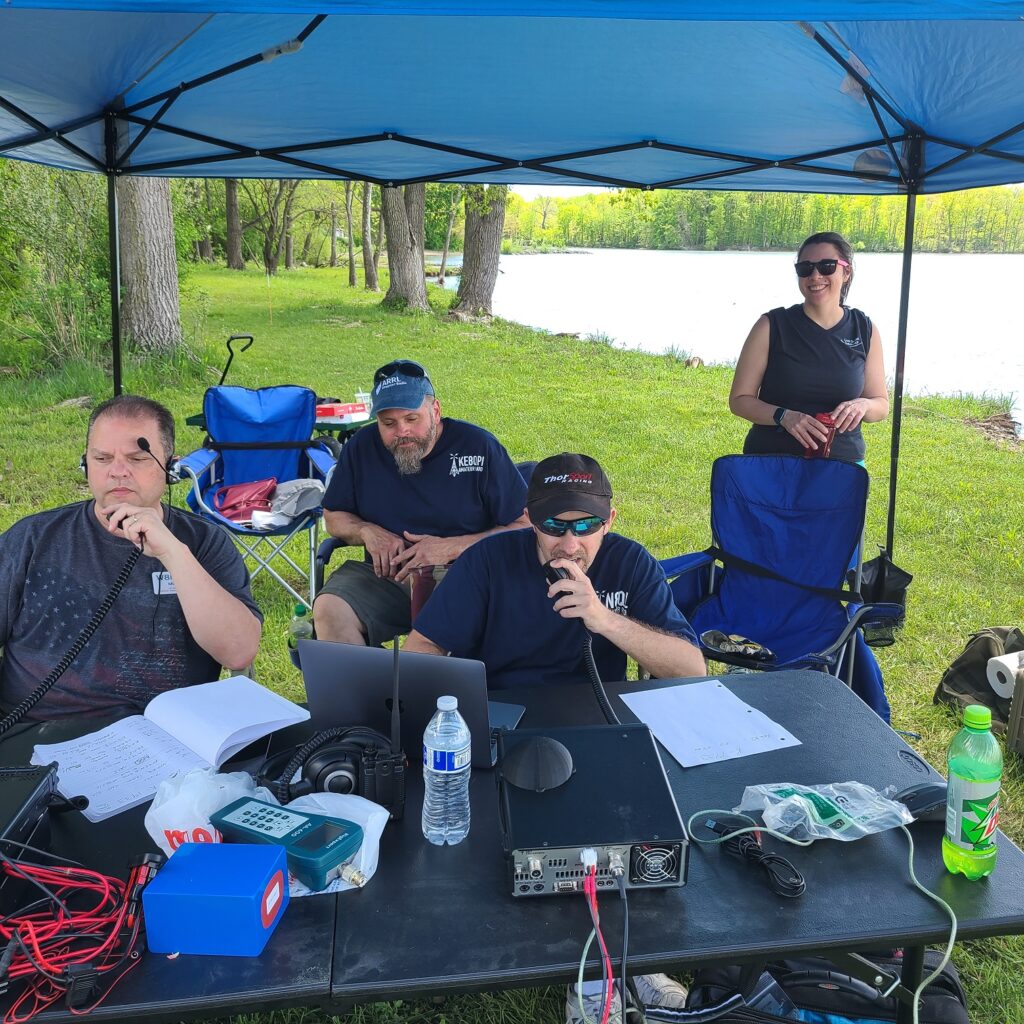If you are familiar with Parks On the Air , and never performed a park activation, you are missing out. This weekend, I was involved with activating Alum Creek State Park (K-1933) along with KE8QPI, N8QL, and W8MDC. This was the first time any of us had ever performed an activation, so we considered this a “Dry-Run” to learn the ropes, hang out, and make some contacts.
The Setup
The activation gave us a chance to try out some new gear before Field Day and see what worked, and what didn’t. Here is a list of the different station configurations.
Station #1 (AE8Q) – Yaesu FT-991a, 35AH AGM Battery, with RigRunner 4004 USB, and a Chamelon MPAS 2.0 antenna.
Station #2 (N8QL) – Yaesu FT-891, LDG AT-100ProII Autotuner, 15AH LifePO4 Battery, and a Buddipole Deluxe Antenna.
Station #3 (KE8QPI) – Yaesu FT-891, 20AH Bioenno LifePO4 Battery, Bioenno 120W Solar Panel , PowerWerx Battery Box and Solar Charge Controller, and a WolfRiver Coils TIA-1000 antenna.
Station #4 (W8MDC) – ICom IC-7300, 20AH LiFePo4 Battery, and a hand built ARRL End Fed Vertical Halfwave Antenna setup a in a Horizontal NVIS configuration.
With everything setup and ready to go, it was time to get on the air and make some POTA QSO’s.
To summarize, the intent today was to not “burn the barn down” with a large number of QSOs, but more so to test out different setups and figure out what worked well and what didn’t, and of course, to just get on the air and have fun.
Stranger Things
Suddenly, we thought we had slipped into the Twilight Zone. Mike, W8MDC made his 11’th QSO, to a fellow named Mike, KB8SSH, who was also logging his 11’th QSO, and was activating the same park, but the other side of the reservoir. Strange days are upon us!
Lessons Learned
It’s the Small things that get you
Always plan for something to not quite as planned. I initially decided to erect the Chameleon in a Sloper configuration. All started out well, but my homemade antenna launcher had a nut come loose and fall into the grass. One single missing nut rendered the whole launcher fairly useless.
Ever tried to find a small 4mm nut laying in a grassy field? Yeah, I tried, but gave up on that plan fairly quickly. Luckily, there was a backup option to put the Chamelon up with a Vertical Mast.
Antenna Tweaking and Tuning
W8MDC worked for a while to get the EFHW wire up into a tree. Ultimately, he laid it out horizontally with a little bit of elevation off of the ground and ran with an unintentional NVIS antenna. For future attempts, he plans find new methods to get it higher into the tree, and possibly set it up as an inverted V. Otherwise, we will likely see his DX Commander all-band vertical in action again.
N8QL worked a bit getting the Buddipole to load on the lower bands. Alex indicates that it works best when its in a clear wide open area. We had a lot of trees, and other antennas around it.
Similarly, KE8QPI also had to make adjustment to the Wolf River Coils antenna also to fine tune it for the location and for the band of operation. I loaned him my LDG tuner, which also as a shortcut.
Any antenna usually requires some retuning or tweaking, regardless of how good it is, when placed in a new environment. This is a skill all hams learn quickly and become fairly comfortable if doing very many field deployments. It is always a good idea to bring an Antenna Analyzer or have an internal/external antenna tuner if you have one.
Solar Power
The cables for the KE8QPI’s Solar Cells needed a little extra length. During the morning, the Solar Panels were in the shade and the cables would not allow the needed distance to get it in direct sunlight. Luckily this problem went away in a couple of hours.
120W of solar, combined with the a Lithium battery, proved good for running all day without worries. Rob’s setup showed this to be the case.
Of note, Solar Battery chargers and inverters are notoriously bad for creating RF interference in a lot of radios. The Solar Battery charger in this setup works like a champ. It generated no discernable RF noise or interference, even when setting less than a foot from the radio! I think this setup is in my future.
Batteries
Witnessing a larger AH AGM Battery and a Smaller AH Lithium Battery operate side by side, the smaller Lithium battery proved to be superior.
The problem with my AGM is not necessarily with the battery itself, but when combined with voltage specifications of FT-991a it caused an unexpected problem. See, the FT-991a will shutoff anytime the voltage drops even slightly below 11.7 volts. When transmitting 50+ watts, there is a fair amount of voltage drop on the battery after 30 – 40 contacts. The AGM has difficulty holding 11.7V under during this draw even though if it still has a fair amount of power left in it.
Looking at the power meter, I could see that I had only used 30% (10 AH) of the available battery capacity. This problem is mainly due to chemistry of the battery, combined with the voltage specification of the FT-991a. When using Lead Acid batteries, it is best to take 1/2 of the stated AH rating, as the starting point. This is especially true, if it is discharged at a high loads.
Lithium Polymer batteries do not suffer from this so much, they will maintain a fairly stable and flat voltage, even under heavy draw, until they reach around 20% capacity. In reality, the smaller AH Lithium Batteries will almost always last longer than a larger AGM battery with my setup.
To combat this, I could purchase a Battery Booster, to maintain the voltage to the rig, and get more capacity. Though the economics of it just are not there, the cost of an AGM battery + Battery Booster ends up costing more than purchasing a Lithium Battery outright.
Multiple Operators
Being a multi-operator site, each of us wanted to Activate the Park using our own callsign. One of us would operate for a while, switch off, and others would jump on. This proved to be a time consuming since we were logging primarily from a single computer.
Paper logs, or each of us running our own software, would have been quicker and easier. Plus it would have side stepped reconfiguring the logging software on the one computer each time we changed operators.
There were instances were hams in attendance wanted to jump on and make a QSO or two without necessarily make the 10 QSO’s needed to activate the park using their callsign. In this instance we had to log the contact under one of our callsigns so the POTA hunter would get credit.
After the event was finished, W8MDC (Mike) setup a new account with Parks On The Air under the club callsign, K8ES. For future multi-operator POTA events, this should prove to work well and any operator can jump on, make 1 to many contacts, and have their effort contribute to the activation of the park and credit for the hunters.
The Ham Radio Brotherhood
One of the great things about Ham Radio is the spirit of all involved and how willing we are to help out. We had a number of club members stop by to help out, rag chew, and make the event even more fun! Many thanks to all of the hams listed below and members of the Delaware Amateur Radio Association who made the event a success!
Paul (KB8PTL), Guy(KD8KWH), Denny(KE8ULU), Gary (KE8O), Sandy(N8YS)
73

